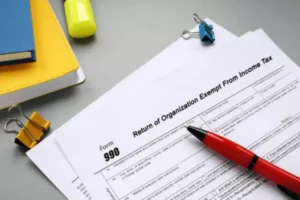Content

In other words, it’s the amount of time it takes an investment to earn enough money to pay for itself or breakeven. This time-based measurement is particularly important to management for analyzing risk. Because payback periods only assess cash flows up to the point at which a corporation’s initial investment is recouped, they do not consider any additional profits a company may generate. As a result, if a company is just concerned with short-term returns on investment, it may miss out on the long-term potential. The payback period is a practical and easy way to screen and rank projects or investments based on their profitability and risk. However, you should not rely on the payback period alone to make your final decision.
However, one limitation of the payback period is its disregard for the time value of money, which refers to the declining worth of money over time. The concept of the time value of money highlights that the present value of money is higher than its future value. When evaluating the payback period or determining the breakeven point in a business venture, it is crucial to consider the opportunity cost and the influence of the time value of money. When calculating break-even in business, businesses use several types of payback periods. The net present value of the NPV method is one of the common processes of calculating the payback period, which calculates the future earnings at the present value.
What is the payback period formula?
Depreciation is an essential factor to consider while accounting and forecasting for any business. However, the payback period can also be more comprehensive than its mark when the organization is likely to experience a growth spurt soon. CFI is the global institution behind the financial modeling and valuation analyst FMVA® Designation.

CFI is on a mission to enable anyone to be a great financial analyst and have a great career path. In order to help you advance your career, CFI has compiled many resources to assist you along the path. As you can see in the example below, a DCF model is used to graph the payback period (middle https://www.bookstime.com/articles/payback-period graph below). Variation in the payback period (n) in years with D/C, and various parameters r, m, i, and e (Böer, 1978). In this case, the payback period would be 4.0 years because 200,0000 divided by 50,000 is 4. Get instant access to video lessons taught by experienced investment bankers.
Start your trial now!
Similar to a break-even analysis, the payback period is an important metric, particularly for small business owners who may not have the cash flow available to tie funds up for several years. Using the payback method before purchasing an expensive asset gives business owners the information they need to make the right decision for their business. The payback period formula differs based on the nature of the project cashflows. For instance, a company is selling a product A at $100, has a machine that operates at full capacity, and manufactures 1,000 unit each year. Thus, this company generates even cashflows with the value of $100,000 per year. But for uneven cashflow, they refer to unequal payments, or cashflows that changes each period.

The payback period is computed using this method by dividing the annualized cash inflows that a project or product is estimated to generate by the amount of money initially spent. While a quick return may not be a top priority for every organization in every situation, it is a critical factor in every situation. While the payback period shows us how long it takes for the return on investment, it does not show what the return on investment is. Referring to our example, cash flows continue beyond period 3, but they are not relevant in accordance with the decision rule in the payback method. Typically, payback period is calculated across a whole business, by totaling all customer acquisition costs in a period, and dividing by revenue contributed by new customers for the following period. Acting as a simple risk analysis, the payback period formula is easy to understand.
Terms Similar to the Payback Method
The effect of inflation is considered by the dynamic method of economic evaluation. The DPB rule is to accept projects whose sum of discounted net cost savings provides a payback period less than or equal to some prespecified number of years. It is the time it takes to breakeven in an economic or financial sense [32].
In theory, payback period should include all customer acquisition costs, not just the direct ones. But attributing an activity to a customer acquisition is easier said than done. Breaking down the payback period beyond the average for all of your customers will help you shape different ways to make acquisition more efficient. The payback period is the amount of time it would take for an investor to recover a project’s initial cost. Alternative measures of “return” preferred by economists are net present value and internal rate of return. An implicit assumption in the use of payback period is that returns to the investment continue after the payback period.
Therefore, this might not give an accurate overall picture of what cash flows will actually be earned for the project. A shorter payback period means the investment will be ‘repaid’ fairly shortly, in other words, the cost of that investment will quickly be recovered by the cash flow that investment will generate. Calculating your payback period can be helpful in the decision-making process. It may be the deciding factor in whether you should go ahead with the purchase of that big-ticket asset, or hold off until your cash flow is better.
